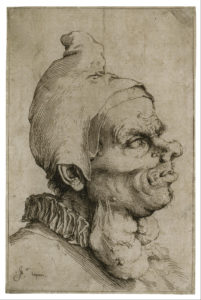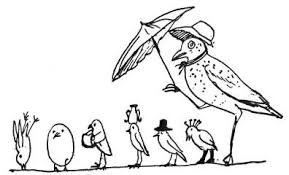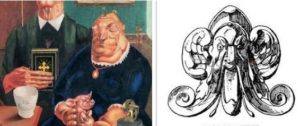Definition of Genre
The Grotesque is used as an adjective for expressions like strange, mysterious, dark, ugly, unpleasant, incongruous etc. it used to describe strange shapes and hideous forms such as ghosts, monsters. The Grotesque is both artistic and literary term and covers a range of expressions.
Since the eighteenth century, therefore, ‘grotesque’ has come to be used as an adjective for strange, ugly, disgusting, horrific. It involved transgression of boundaries – physical or psychological. Exaggeration plays an important role.

What does Grotesque mean?
In art, however, ‘grotesque’ is used to refer to something that evokes a feeling of discomfort as well as pity or sympathy. The ‘grotesque’ finds its origin in the Italian word ‘grottesca’ or ‘grotto’ meaning “of a cave,” which was an extravagant style of art developed in the late fifteenth century Rome.
It spread from Italy to other European languages eventually, covering meanings like ‘arabesque’ and ‘Moresque’ for types of decorative patterns. They often depict pictures ranging from like tendrils of the vine, dark foliage to the quasi-organic fusion of men, birds and beasts with goblets, candelabra etc.
What does grotesque mean in literature?
The best example of grotesque in literature can be found in the story The Metamorphosis by Franz Kafka. It tells the story of a man who wakes up one day to discover that he has been turned into a giant insect. Nicolai Gogol’s story The Nose also utilises grotesque, depicting the story of a man who finds that his nose has run away.
The grotesque is often used in genres like tragicomedy and satire. It is useful in conveying grief and pain in an artistic and effective way. It has therefore been labelled by Thomas Mann as the “genuine antibourgeois style.”
Mythic and epic literature are great sources to track grotesque figures. From the one-eyed Polyphemus in Homer’s Odyssey to the same figure as Cyclops in Hesiod’s Theogony, they are examples of the grotesque. Ovid’s Metamorphoses is another important source of grotesque and hybrid creatures.
Horace, in his Art of Poetry also talks about the dangers of grotesque or mixed forms. According to him, the departure of human values from classical models of reason, order, harmony etc, opens up the possibility of entering into the grotesque form.
Grotesque components can often be traced in gothic writing in their characters, style and location i.e. the environment being described may be grotesque. For example, the gothic urban settings of Charles Dickens’s novels can be viewed as grotesque. Victor Hugo’s Hunchback of Notre Dame is also one of the most celebrated grotesques in literature.
Mary Shelly’s Frankenstein is also considered a fine example of grotesque. The idea of the monster being built by sewing together the mutilated parts of a corpse and brought into life by extraordinary methods is the finest instance of excess and transgression of normative human order, evoking both fear and pity for the monster.
Victorian Era Grotesque
Grotesque in Victorian literature can be traced in texts such as Jonathan Swift’s Gulliver’s Travels and the works of Alexander Pope. The grotesque also acquired a new shape in Lewis Caroll’s Alice’s Adventures in Wonderland, where he introduced a world of fantasy.
Caroll made his strange characters less frightful for children to enjoy, but they were heavily laden with meaning. The Mad Hatter, Cheshire Cat, Mock Turtle are all examples of grotesque in the book.
Edward Lear was another important comic grotesque writer who played with the idea of sense and nonsense. Lear’s illustrations also display a curious form of grotesque – said to be at his best while drawing grotesque bird figures.
He was also the pioneer of the poetic form limerick and mastered the art of nonsense verse. Poems such as ‘The Courtship of the Yonghy – Bonghy – Bo,’ ‘The Dong with the Luminous Nose,’ etc. are all classic examples of grotesque.

Victorian Photos and Paintings
Victorian period invested the term ‘grotesque’ with the sense of simple distortion and disfiguration. The grotesque figures and faces drawn by the artists had started to be used as border decorations or initials in manuscripts.
Half-human, thumbnails vignettes started to be drawn in margins. Carved figures were drawn on buildings, such as those of gargoyles and waterspouts. All these painting and photos were considered grotesque.
A boom in the production of paintings and art of grotesque genre happened in Germany in the period 1920 – 30. In contemporary art, grotesque paintings and illustrations are also categorized as ‘fantastic art.’
